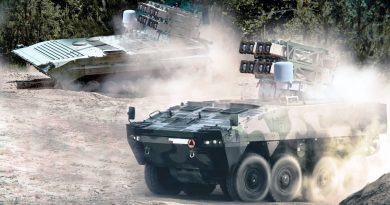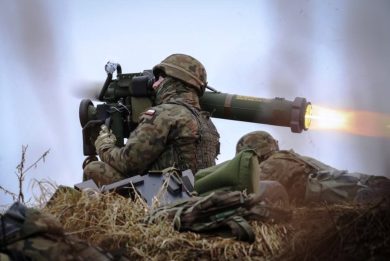
ADEX 2023 – Mass versus accuracy: KDI unveils a new unguided 230 mm rocket for the Chunmoo MRL
At ADEX 2023 Korea Defense Industry (KDI) exhibits the new 230 mm unguided rocket aimed at providing a higher firepower at medium range for the Chunmoo multiple rocket launcher (MRL) in service with the Republic of Korea Army (ROKA), recently delivered to Poland
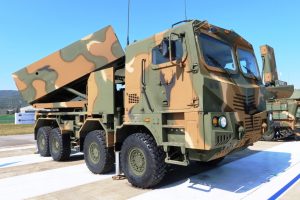
Deployed by the ROKA in the second half of the 2010s the K239 Chunmoo MRL is now in service with Corps and Division artillery battalions, providing suppression as well as counter-battery capacity to the units. Capable to fire rockets of various calibres, currently the longer range one is the guided CGR080, a 239 mm guided munition developed by KDI, capable to reach a target at 80 km distance, with a load of antitank submunitions or with a high explosive warhead. Second in line is the 227 mm unguided rocket of the MLRS, which allows commonality with the system of US origin but has a rage of 45.5 km.
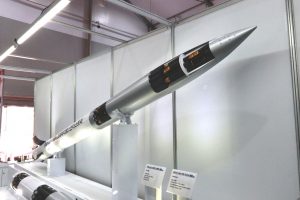
At ADEX a new rocket could be seen in the KDI stand. It derives from the CGR80 in many aspects, but has a slightly smaller calibre, 230 mm, the rockets being packed in a six-munition pod in two rows of three, the same layout adopted for the guided rocket, two pods being carried by the launcher.
The rocket is 4,000 mm long, has a diameter of 232 mm and has a mass at launch of 306 kg. It can reach targets up to 45 km distance, with a CEP of less than 100 metres, according to data provided by KDI representatives.
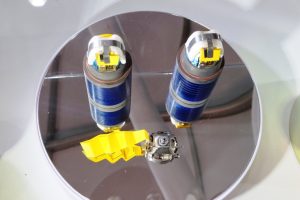
What changes considerably compared to the guided rocket is the load; according to information gathered at ADEX the guided munition carries around 200 submunitions, while the new one can host up to around 500 bomblets which is 2.5 times more. According to KDI representatives submunitions are similar but not identical to those of the guided rocket. Although no details were provided on the ejection mechanism, this should allow either to considerably increase the density of submunitions per area unit or to increase the area keeping a similar density.
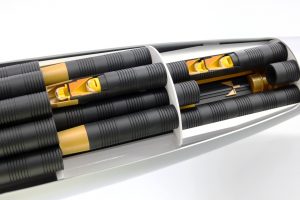
This was possible thanks to the removal of all guidance subsystems, all this space being now dedicated to submunitions. Removing all guidance elements has also a beneficial impact on the rocket price, which EDR On-Line understood being roughly half that of the 239 mm guided rocket. The development of the new unguided munition has been completed and KDI plans to start manufacturing in March 2024, the Korean Defense Acquisition Program Administration (DAPA) having already filed a contract which details remain undisclosed. EDR On-Line didn’t got any hint of a high explosive version of that rocket, which means that for the time marketing will be limited to those countries that did not signed the Convention on Cluster Munitions. Neither the Republic of Korea nor Poland, the latter having recently acquired the Chunmoo, signed that document, however according to available information for the time being Warsaw acquired only the HE version of the 239 mm guided rocket.
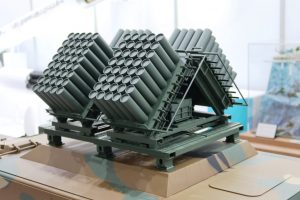
Another area denial weapon visible, in scale model at the KDI stand was a scatterable mine system, which in the first stage of development, the production of the prototype being planned for 2024. The scale model shows four clusters of launching tubes fitted in a four by eight configuration, for a total of 160 tubes. The system being still on computer screens not many details were provided, however it was revealed that tubes will be loaded with dual-purpose improved conventional munitions, these having a much bigger diameter compared to the bomblets used in the rockets; they will also be flatter, which means that every tube might host more than one, similar systems deploying usually 4-5 munitions per tube, which would mean a total of 640-800 munitions if our guessing is correct. The four modules are fitted with an angle of around 45° and look sideways, two of them deploying their load on the right of the vehicle and the other two on the left, a control panel allowing the operator to select the launch sequence. If as said the prototype will be ready next year, the system should become available in 2025.
Photos by P. Valpolini


